Disclaimer: This post may contain Amazon affiliate links. Sudachi earns a small percentage from qualifying purchases at no extra cost to you. See disclaimer for more info.
What is “Sweet Potato”?
Autumn is a favourite time of year for many (including myself!) and no Autumn in Japan would be complete without appearance of the iconic “satsumaimo” (さつま芋) known in English as the “Japanese sweet potato”. Satsumaimo is so versaitile and can be used in both savoury dishes like tempura, as well as in sweets like “daigaku imo” (candied sweet potato).
One dessert that really embraces the satsumaimo is the “Suito Poteto” which is how Japanese speakers pronounce the word “Sweet Potato”. Before you ask, yes, the dessert is literally just called “Sweet Potato”, not sweet potato cake or anything like that.
Made with mashed sweet potato mixed with cream, butter and sugar, these small cake-like desserts are shaped into miniature sweet potatoes then egg-washed and toasted or baked. The rich taste and soft creamy texture is a real treat!
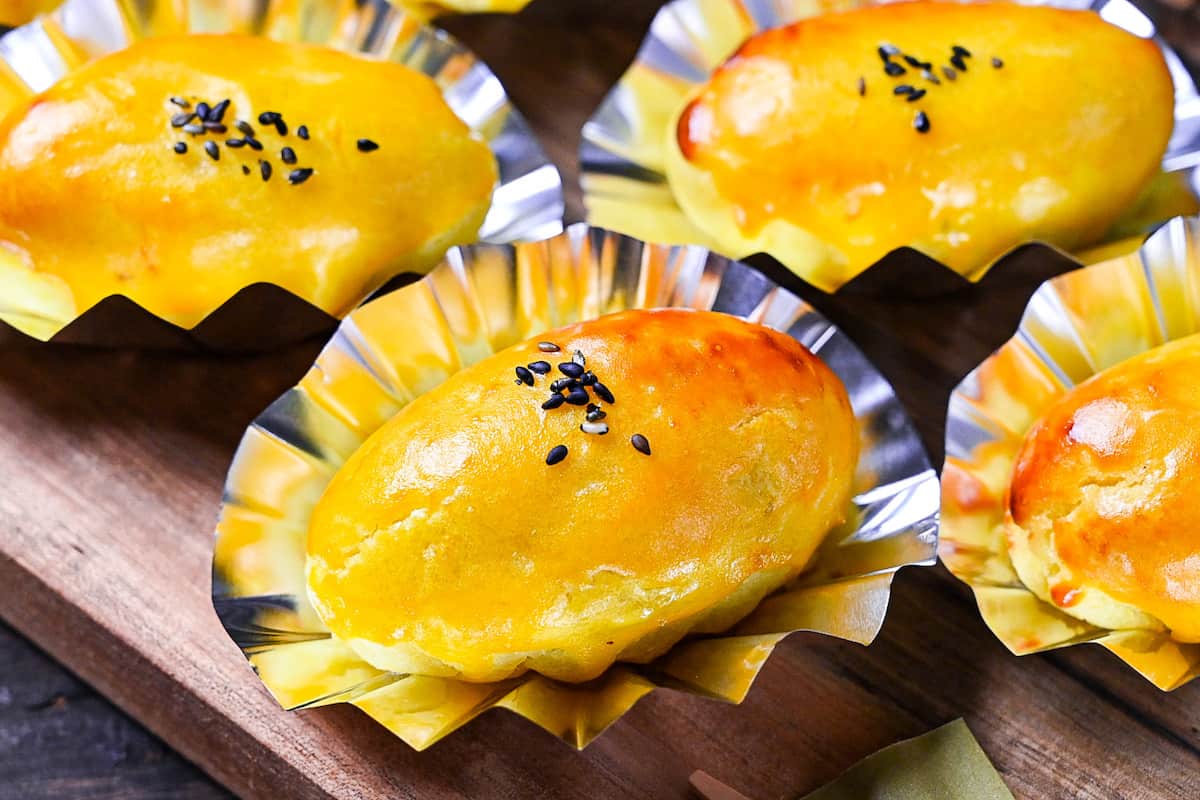
The Origins of “Sweet Potato”
While the exact origin remains unclear, it is believed that the dessert known as “Sweet Potato” appeared in Japan sometime during the Meiji period (1868-1912) and was made by mixing baked sweet potato with eggs and sugar, then serving them on their original skins.
The Sweet Potato (dessert) didn’t really gain popularity until after the war, when famous confectionary stores started selling their own versions of the sweet. One of the stores that influenced Sweet Potato’s rise in popularity was the renowned bakery “Donq”, who released the “Matsuzo Poteto” created by Matsuzo Inoue in 1949.
Since then, Sweet Potato has become a well loved sweet across Japan and is generally available as a seasonal product sold in Autumn.
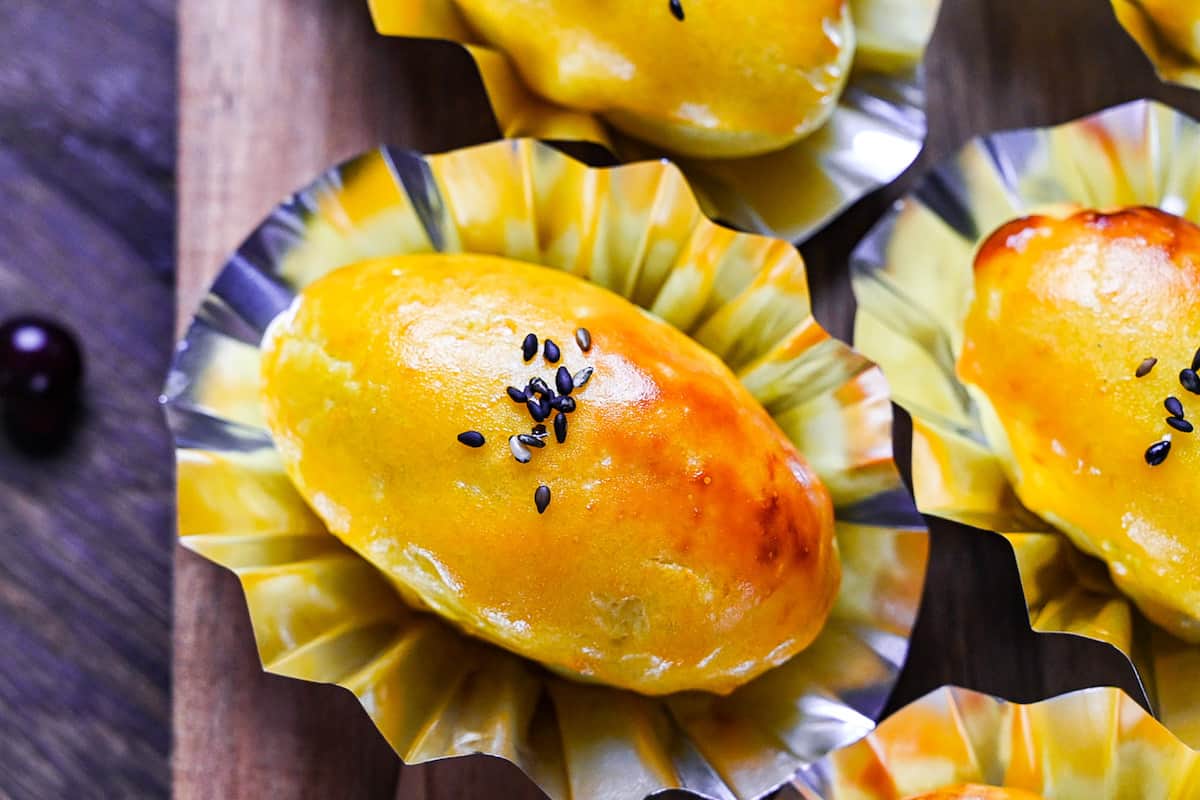
Why is it Called “Sweet Potato”?
Despite being a Japanese recipe in origin, the name “Sweet Potato” comes from the English language. In fact, many Japanese people believed that it was a Western dessert because of the name.
It is believed that it adopted it’s English name due to the fact that it is made with typical Western ingredients like butter and milk or cream, these ingredients don’t appear in traditional Japanese sweets and desserts.
In English it might feel natural to add the word “cake” or “dessert” to the name in order to differentiate the dessert from the sweet potato itself, however this is not necessary in Japanese because sweet potato as a vegetable is called “satsumaimo” and the word “sweet potato” is only used for desserts. Confusing right?!
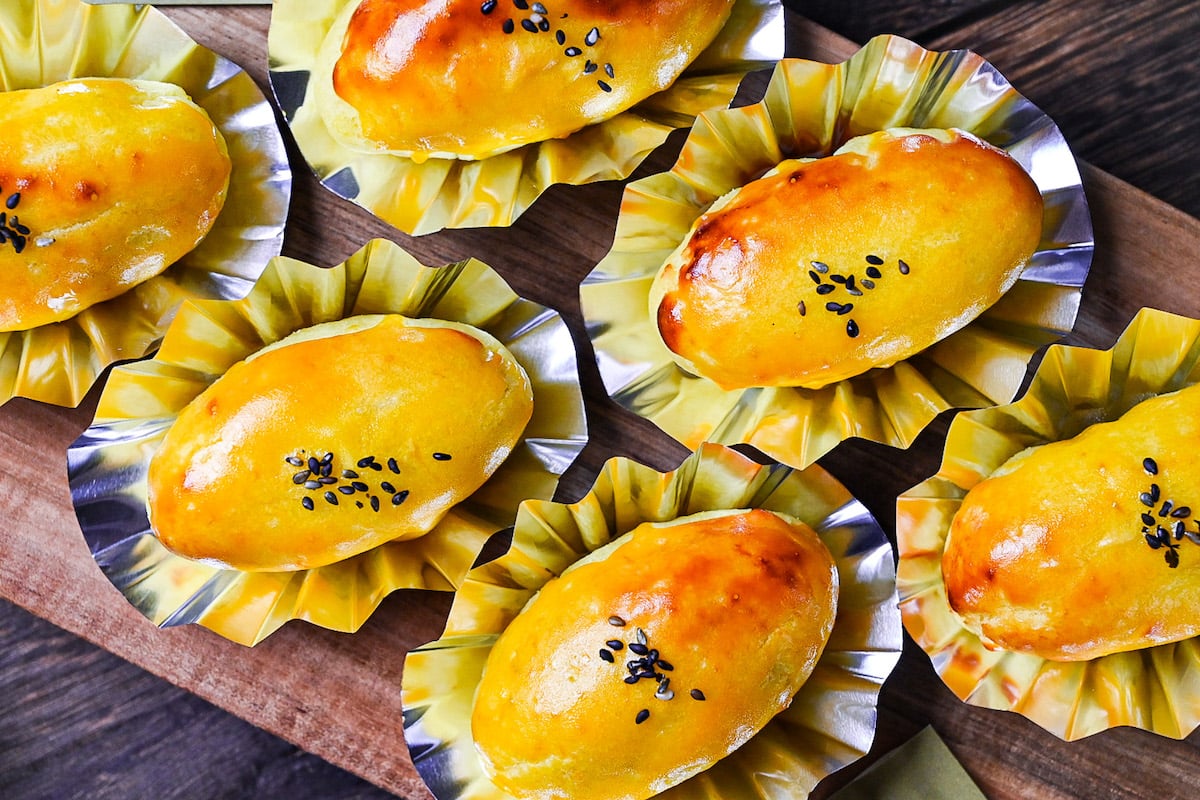
Ingredients & Substitution Ideas
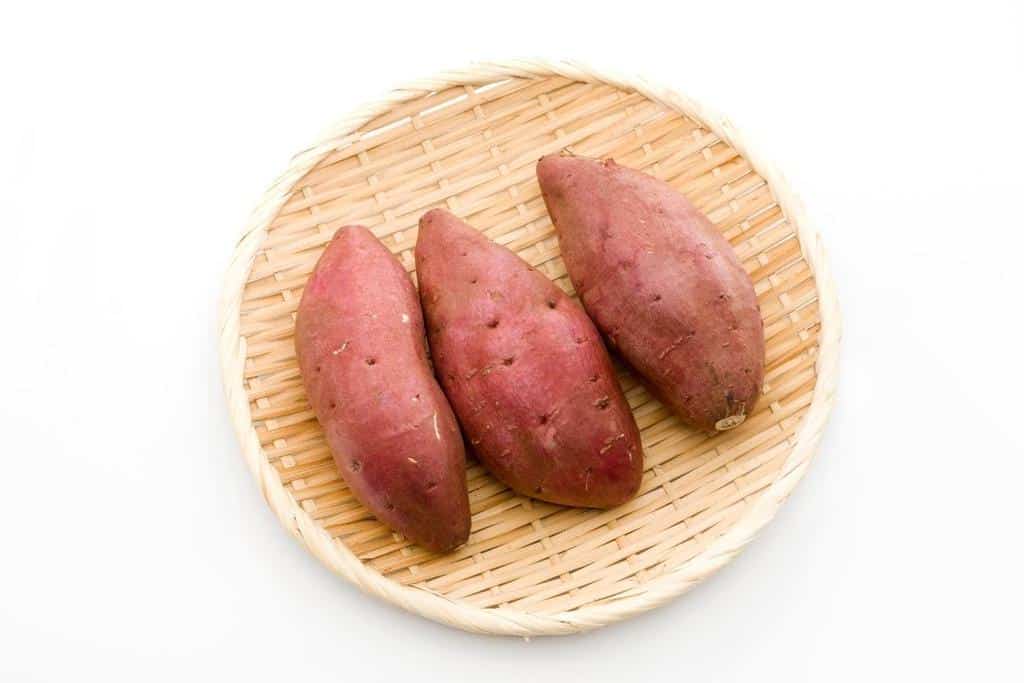
Here is what you’ll need to make “Sweet Potato”:
- Japanese Sweet Potato: Compared to regular sweet potatoes, Japanese sweet potatoes are especially sweet and the dry, white-ish center becomes golden, creamy and dessert-like when cooked. For this reason, I recommend sticking with Japanese sweet potatoes (satsumaimo) for this recipe, which should be available at well-stocked Asian supermarkets.
- White Sugar: Caster or granulated sugar are great for adding sweetness and highlighting the flavor of the sweet potatoes.
- Honey: For an additional layer of sweetness and depth, I add a bit of honey! Feel free to substitute for maple syrup for a plant-based option.
- Unsalted Butter: I always recommend using unsalted butter so that it’s easier to control how much salt is added to dishes. In this case, there aren’t any other salty ingredients so salted butter still works. Use coconut oil for a plant-based substitute.
- Double cream: For an extra creamy texture and decadent flavor, I like to use double cream in this recipe. Alternatively, whole milk can be used as a substitute. If you want to make the recipe suitable for vegans, swap the milk for a plant-based alternative. Note: milk substitutes should be added a little at a time to ensure the mixture doesn’t become too wet and difficult to shape.
- Mirin (optional): For added sweetness and some Japanese flavor, I use Hon Mirin in this recipe. For more information about kinds of mirin to use in Japanese cooking, check out my guide to mirin. This ingredient is optional and can be omitted.
- Vanilla essence: For a more cake-like flavor. If using vanilla extract, half the amount stated in the recipe.
- Egg yolk: For brushing at the end and creating the iconic golden tops. This is more for appearance and can be omitted if you like.
Curious about the exact brands and products that bring my recipes to life? Discover the brands and ingredients behind my recipes at the Sudachi Amazon Storefront. Explore my handpicked pantry essentials and find your next kitchen favorites!
Jump to Full Recipe MeasurementsHow to Adjust the Recipe Based on Weight
Because sweet potatoes vary greatly in size, you will need to adjust the ingredients approprately depending on the weight. I’ve constructed this handy chart for you to follow, so pick the size closest to your sweet potato. Here are my measurements based on sweet potatoes with the skin still on.
| Sweet Potato (with skin) | 250g | 350g | 450g |
| Caster Sugar | 20g | 30g | 40g |
| Honey | 1 tsp | 1 1/2 tsp | 2 tsp |
| Mirin | 1/8 tsp | 1/4 tsp | 1/4 tsp |
| Unsalted butter | 16g | 24g | 32g |
| Double cream | 1 tbsp | 1 1/2 tbsp | 2 tbsp |
| Vanilla essence | 1/8 tsp | 1/4 tsp | 1/4 tsp |
| Yield | 4 | 6 | 8 |
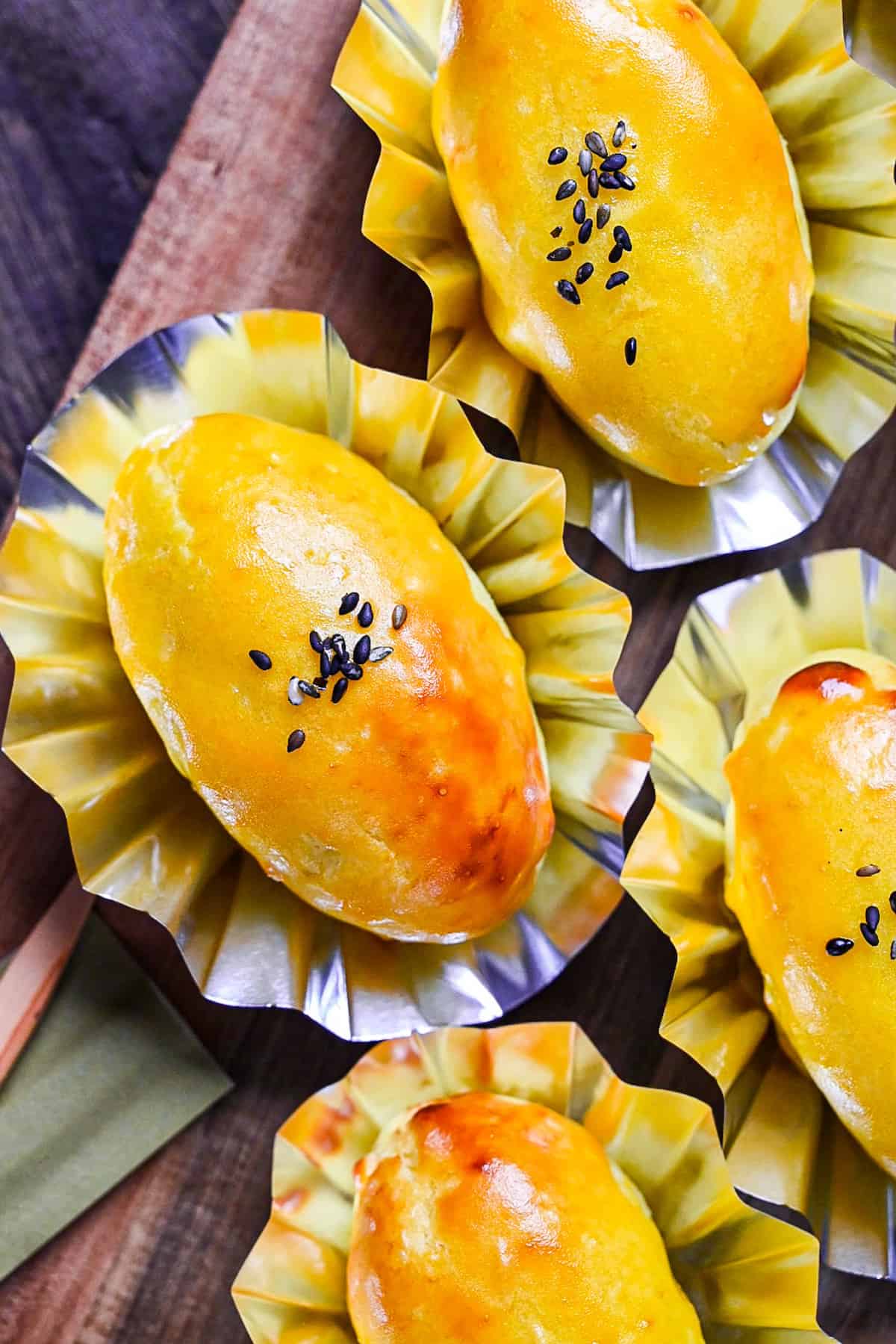
Visual Walkthrough & Tips
Here are my step-by-step instructions for how to make Japanese Sweet Potato Sweet at home. For ingredient quantities and simplified instructions, scroll down for the Printable Recipe Card below.
Start by preparing the sweet potato. Peel off the skin and cut it into slices. I recommend cutting the larger slices in half so that they cook evenly (I didn’t here and regretted it!)
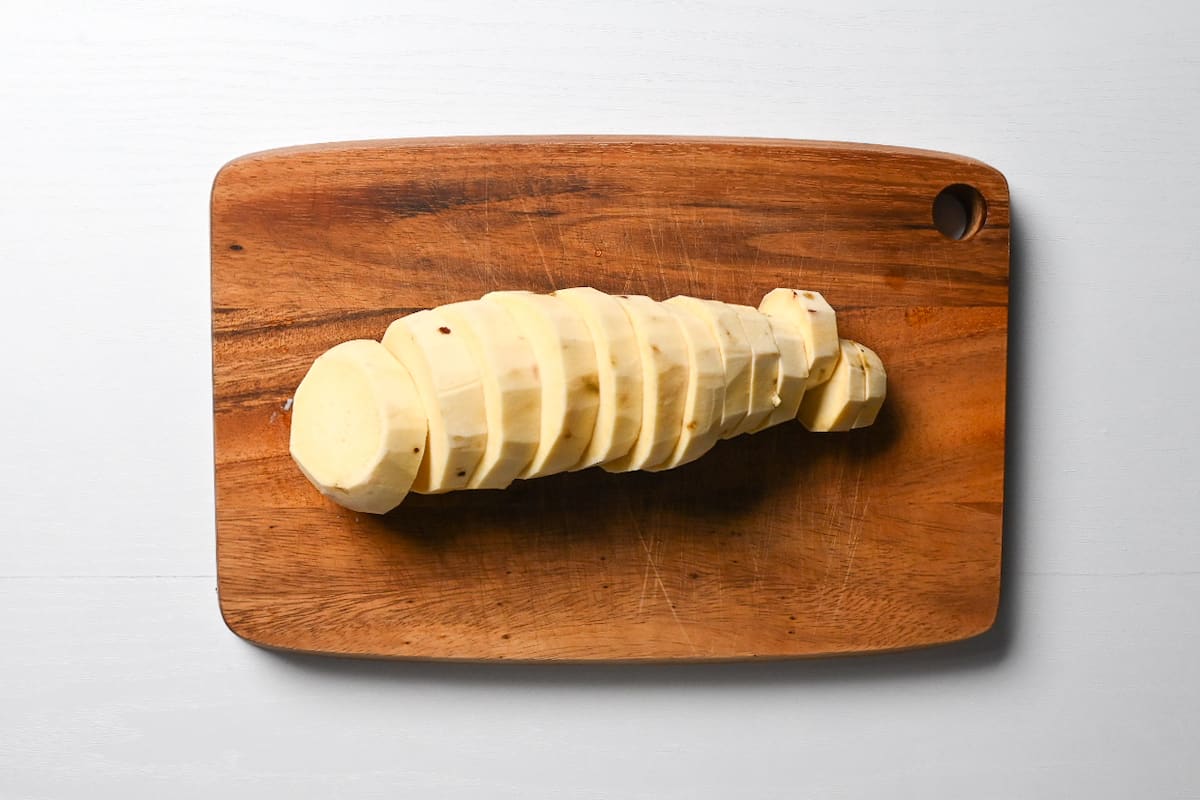
Next, place the slices in a microwavable bowl and fill it with cold water and a pinch of salt. This helps remove excess starch and prevents discoloration. Let them soak for about 5 minutes, no longer than 10!
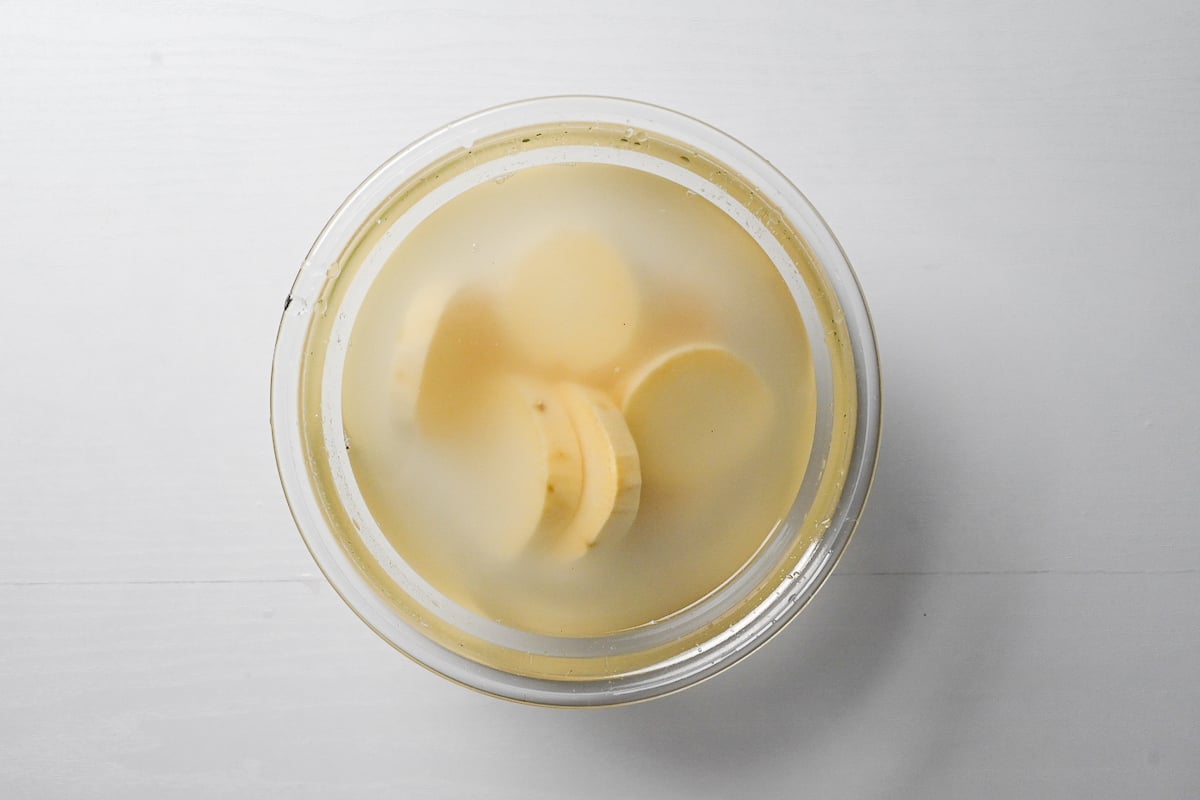
If you soak the sweet potato for longer than 10 minutes it will start to lose its flavour and natural sweetness. 5-10 minutes is plenty!
There are a number ways to cook sweet potato and baking with a low temperature in the oven is well known for bringing out the natural sweetness and creamy texture of sweet potato. However, in this recipe baked sweet potato is too soft and becomes difficult to shape, it also takes a long time to cook (60-80 minutes).
I recommend using a microwave for the best results in this recipe. When sweet potato is microwaved, it is not as soft and sweet as when it’s baked, but it’s quick to do and easier to shape after it’s mashed and mixed with the other ingredients. Since we add sugar and cream anyway, I don’t feel guilty skipping baking this time!
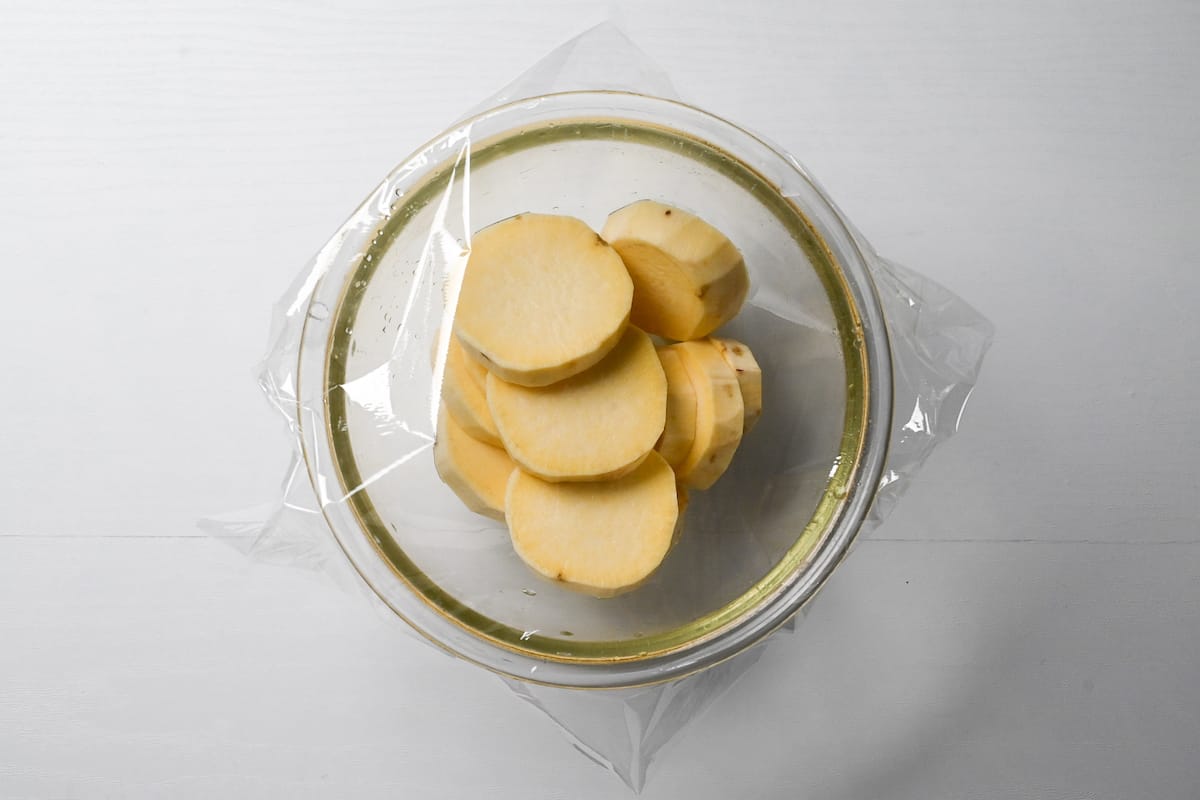
Place the pieces of sweet potato in a microwave safe bowl and cover with plastic wrap. Microwave for 5-6 minutes at 600W, mix the pieces about half-way through to ensure even cooking and be careful when removing the plastic.
Did you know steam is hotter than boiling water? After microwaving, steam will be trapped in the bowl and will release as you move the plastic wrap. Stand back and slowly and carefully peel one corner of the plastic wrap to prevent burns!
Once it’s cooked, mash your sweet potato while it’s still hot. (You might need an oven mitt to hold the bowl, or transfer it to a new bowl.) There are three ways you can mash it:
- Masher – The good old fashioned way is simply using a potato masher (or fork – although it’s a bit more work).
- Potato ricer – If you’re lucky enough to own this utensil you can make short work of mashing and end up with an extra smooth result.
- Food processor – Blending up the potato in a food processor is extremely quick and easy, I recommend adding all the ingredients together to loosen up the mixture so your food processor doesn’t have to work too hard.
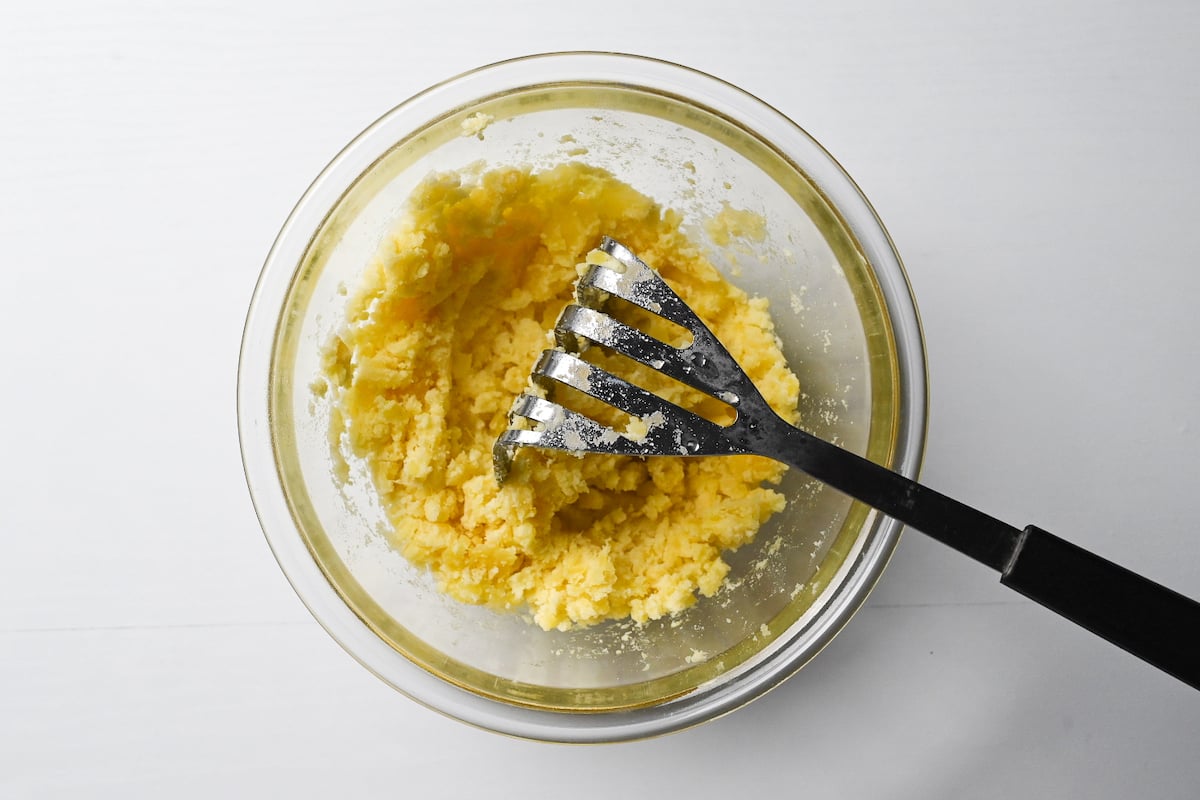
Add the butter, sugar, honey, mirin, vanilla essence and cream while the mashed sweet potato is still warm. This will melt the sugar and butter, making it easier to combine everything together with a silicone spatula.
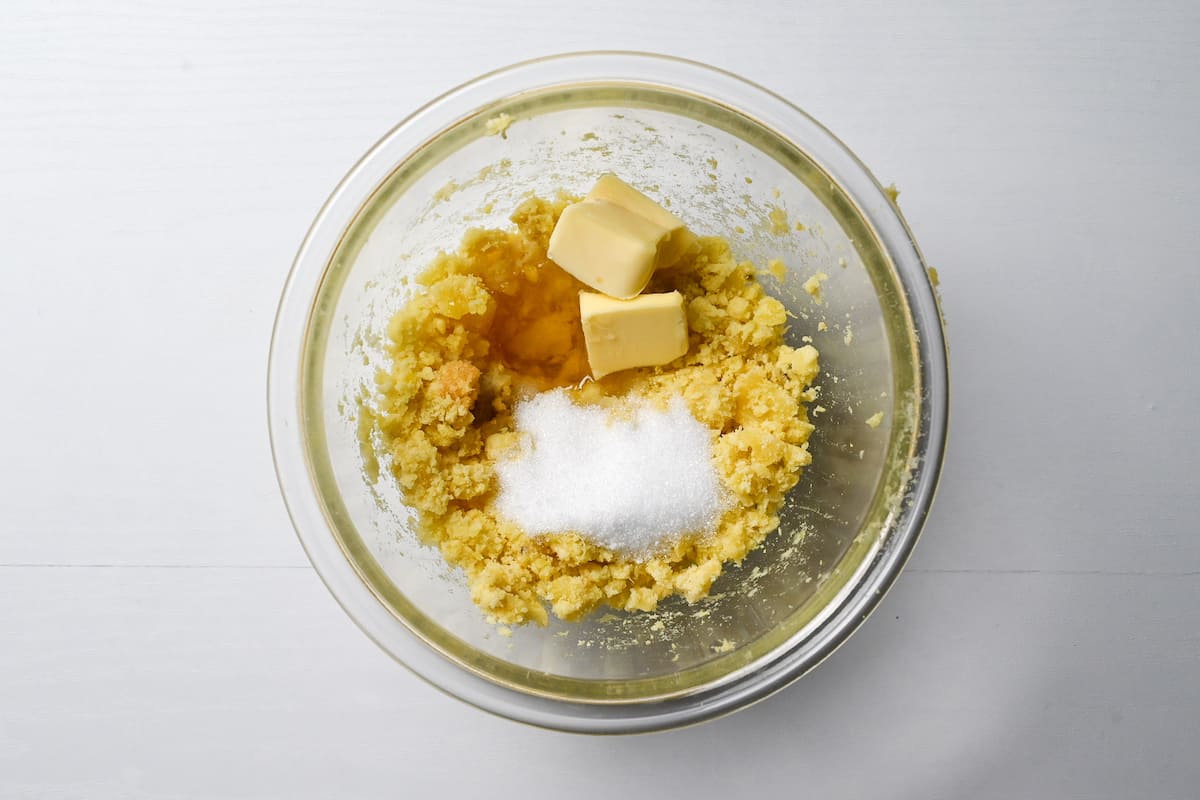
Once combined, it should look like this:
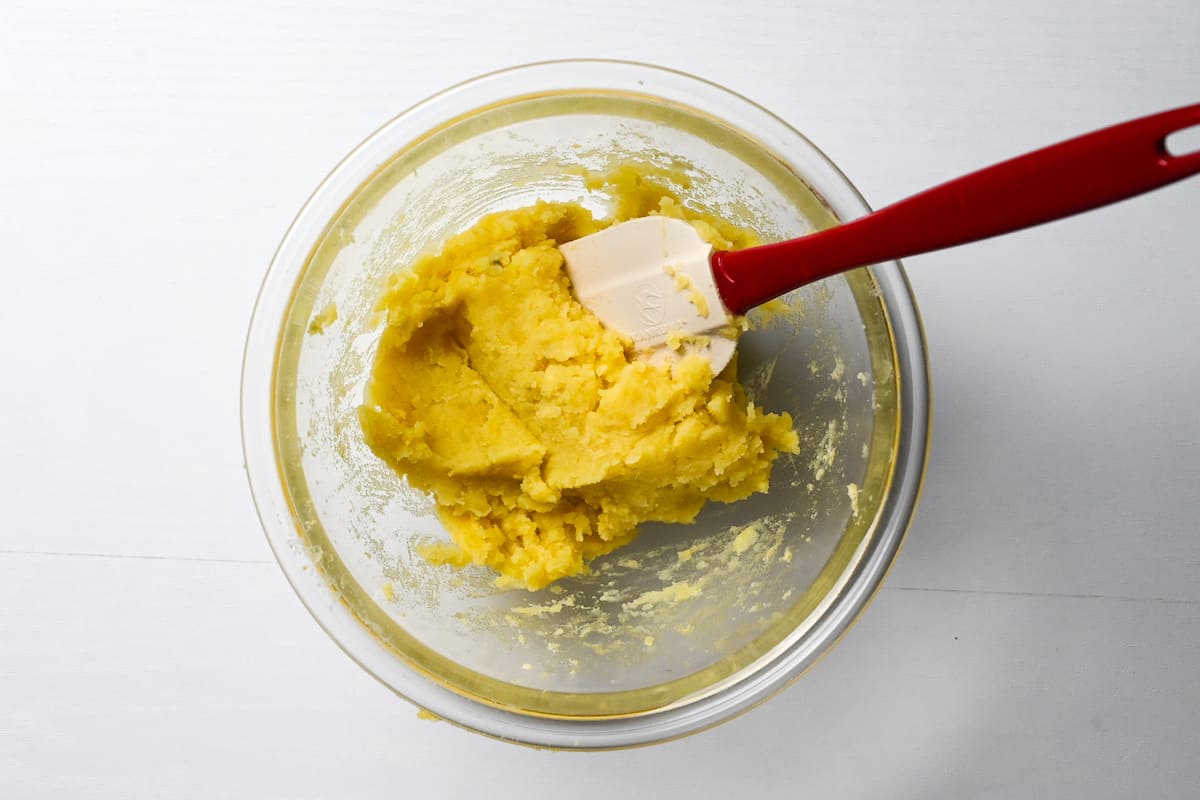
Add the milk a little at a time and mix thoroughly before adding more. This is to make sure the mixture doesn’t become too wet and difficult to shape.
If you used a potato ricer or food processor, you can probably skip this step. If you used a regular potato masher like me, you might find the potato still has a few chunks in there.
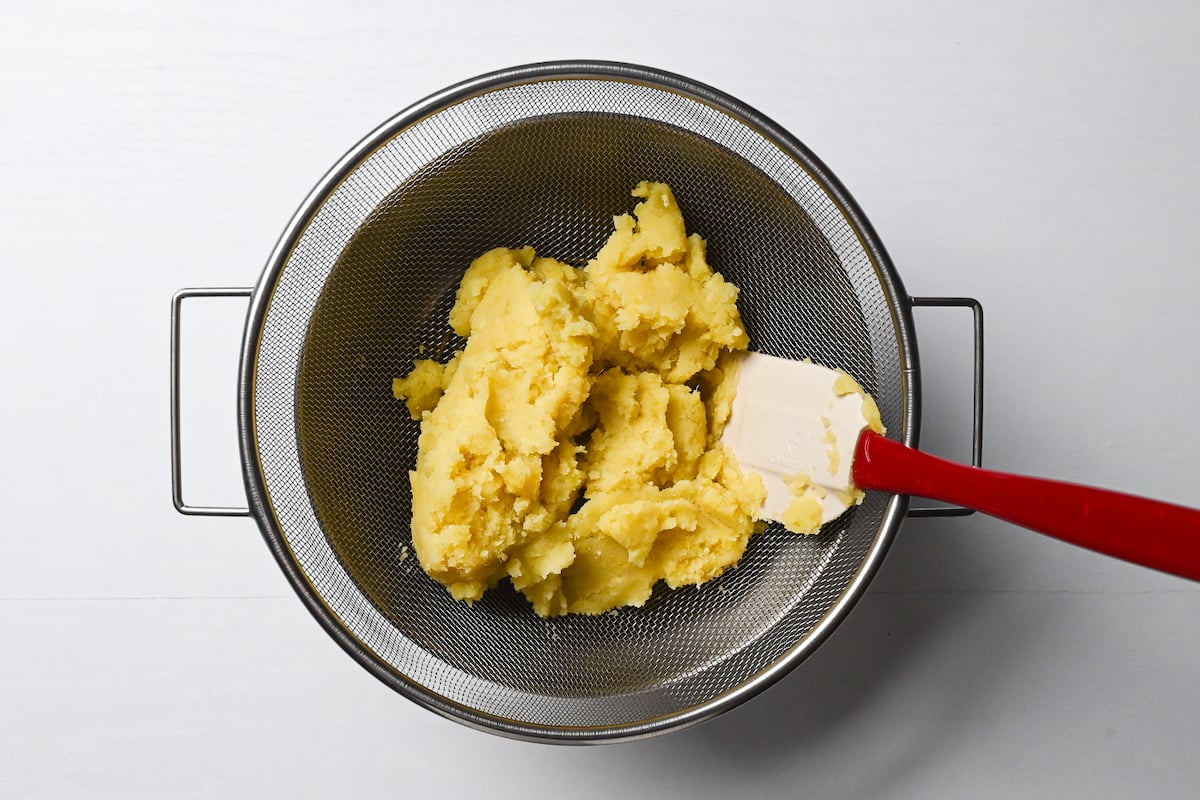
Use a spatula to work the mixture through a sieve. It will be beautifully smooth, so I feel this step is really worthwhile!
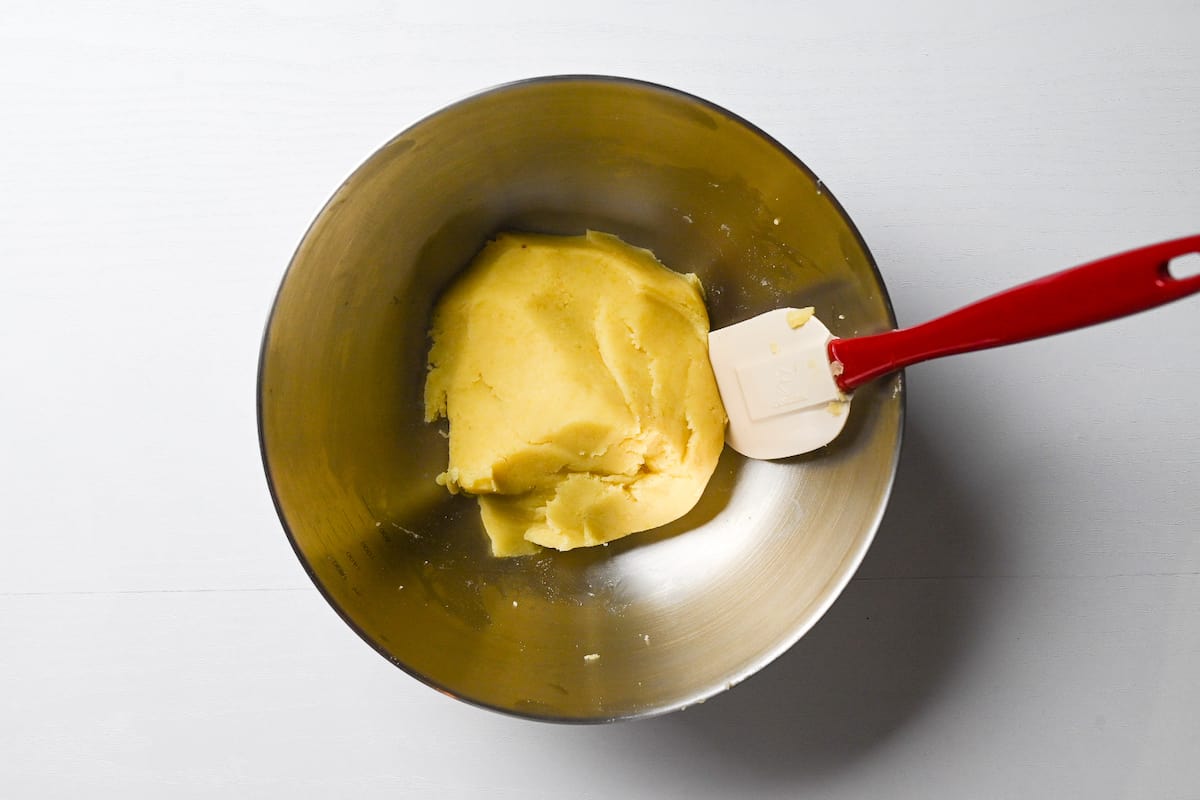
If you’re a perfectionist then you can weigh the mixture using scales and then divide it precisely. Each portion uses approximately 50g of mixture. Alternatively divide it roughly by eye, but keep in mind that if you make them bigger than the recipe states then they might take longer to cook.
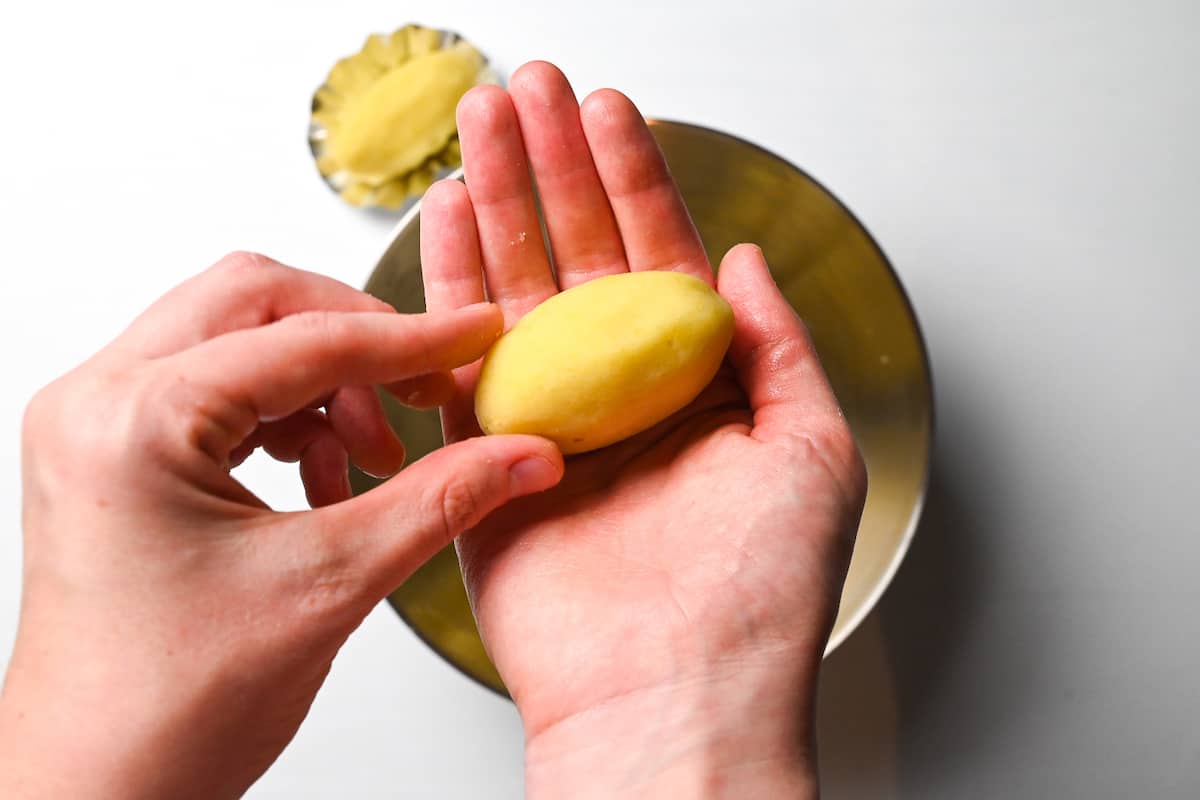
Simply roll the mixture in your palm to make an oval shape. It’s common to use foil cupcake cases (affiliate link) for these and flatten them out, but you can regular cupcake or muffin cases.
Whisk an egg yolk in a bowl and generously brush each sweet potato. (You can use a pastry brush (affiliate link), the back of a spoon or even your finger.) Make sure you get all around the sides so there isn’t any white parts showing (it will become obvious after they’re baked).
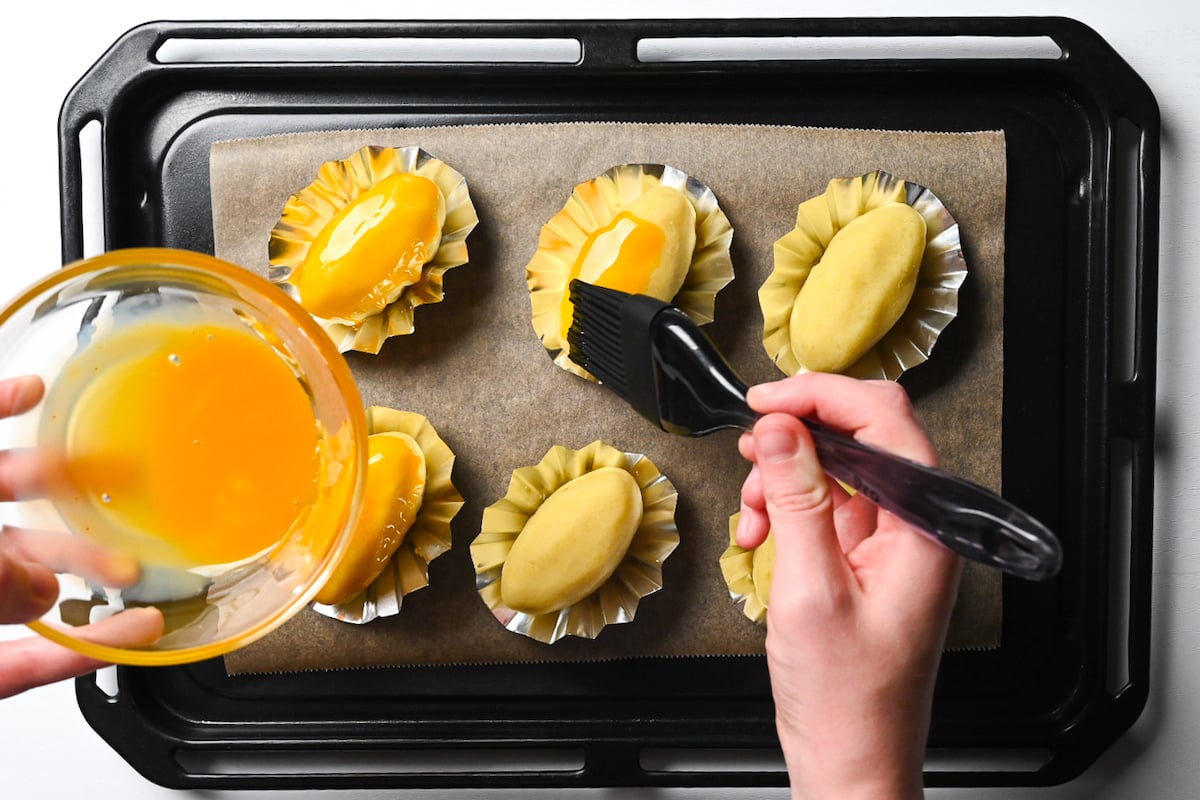
Sprinkle each sweet potato with a few black sesame seeds and then bake in a preheated oven for about 15 minutes at 180°C (356°F) or lightly browned on top. (Alternatively, place in a toaster oven and cook until lightly browned.)
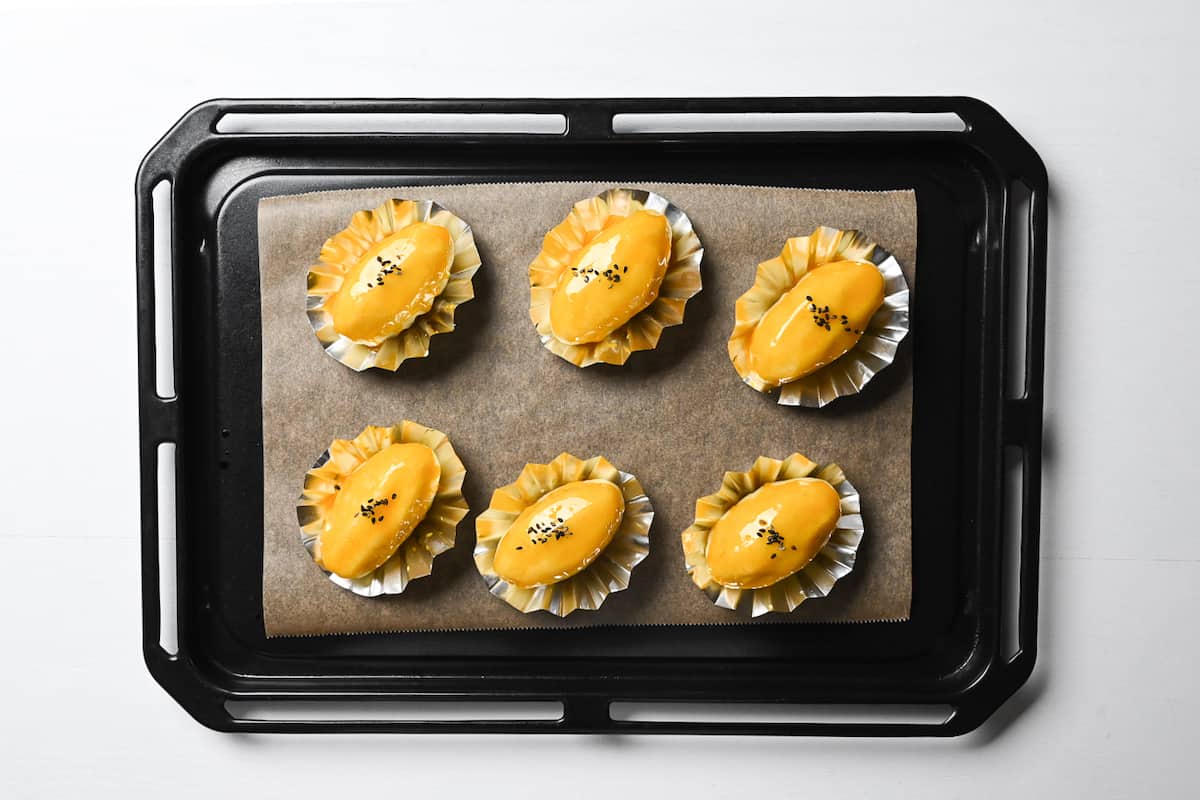
Place the baked sweet potato on a wire rack and leave them to cool. I personally like to chill them in the fridge before eating, but they can also be enjoyed warm!
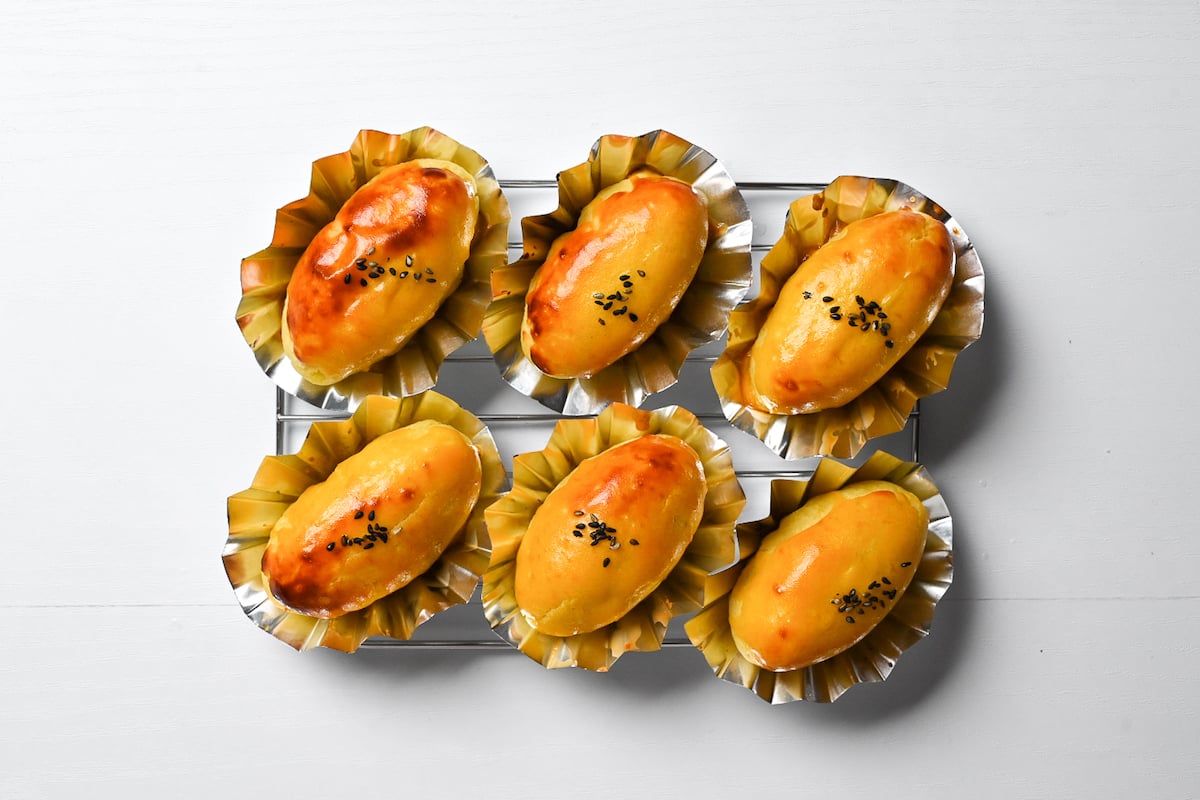
Enjoy!
Jump to Full Recipe Measurements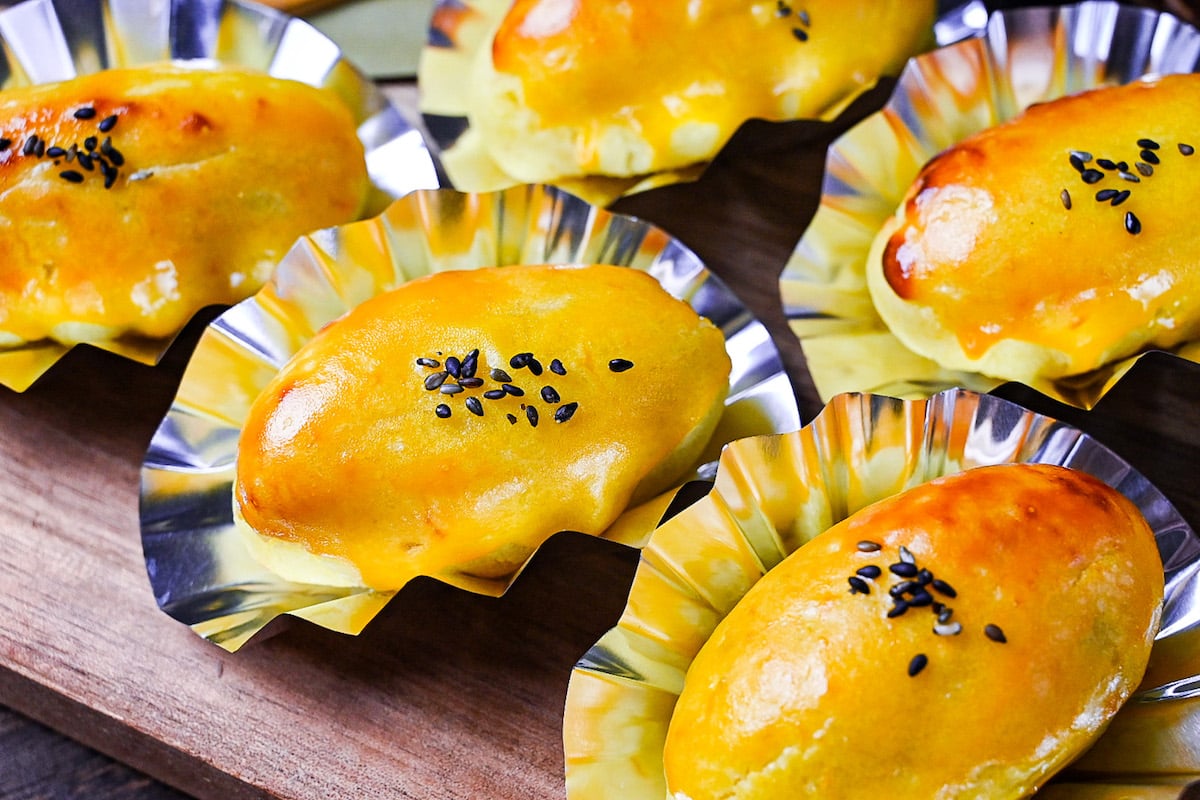
How to Store
Sweet potato can be kept at room temperature in winter if you plan to eat it the same day, if the weather is warm or you plan to eat them the next day or later, it’s better to keep them in the fridge.
Store your sweet potato in an airtight container in the fridge and eat within 2-3 days. I actually find they taste best the next day after being chilled overnight (this is a personal preference though).
You can also freeze them. It is recommended to wrap them individually with plastic wrap and then store them in an airtight container to prevent freezer burn. When you want to eat them, simply defrost at room temperature or heat them in the microwave for about 20 seconds. If you prefer them warm, you can reheat in a toaster oven or under the grill.
Storage summary
Room temperature – 5-6 hours (winter).
Refrigerated – 2-3 days.
Frozen – 1-2 weeks (baked) or 1 month (unbaked).
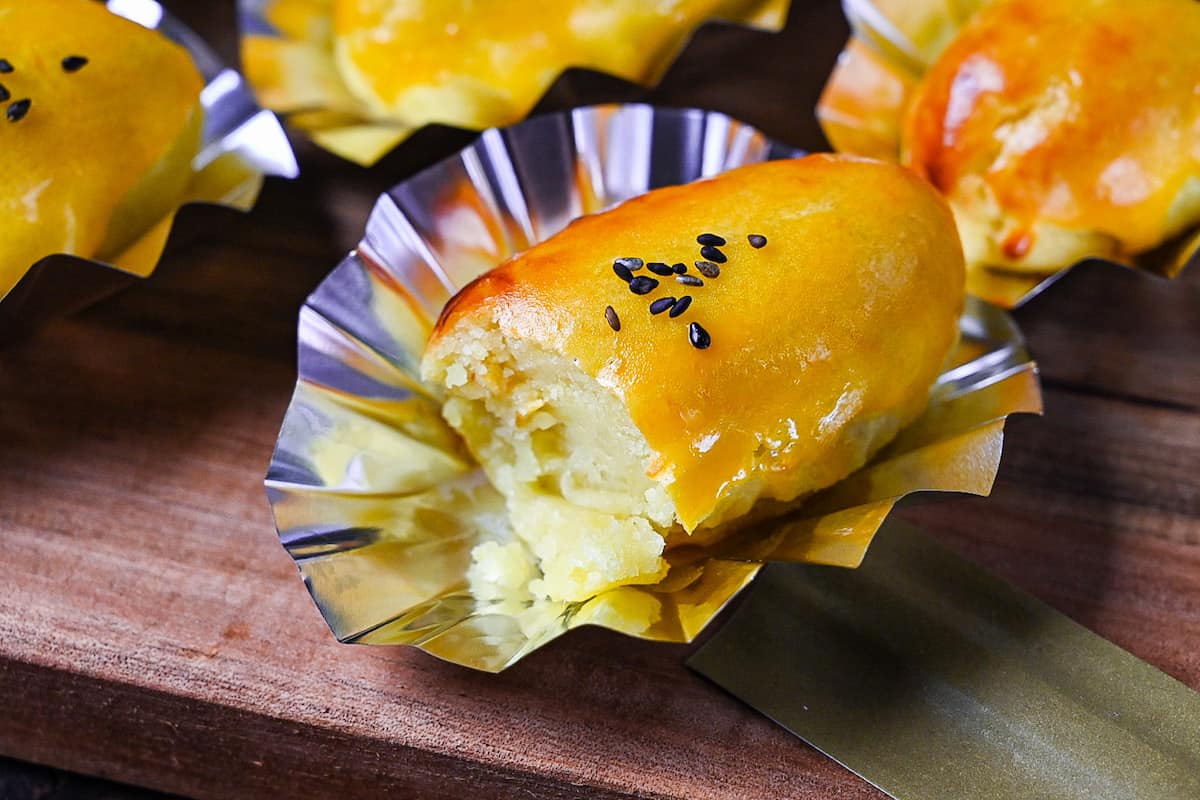
I hope you enjoy this Autumnal Japanese Sweet Potato recipe! If you try it out, I’d really appreciate it if you could spare a moment to let me know what you thought by giving a review and star rating in the comments below. It’s also helpful to share any adjustments you made to the recipe with our other readers. Thank you!
More Sweet Potato Recipes
- Japanese Candied Sweet Potato (Daigaku Imo)
- Sweet Potato Mash with Candied Chestnuts (Kuri Kinton)
- 3 Ways to Make Sweet Potato Tempura
Want more inspiration? Explore my Japanese Dessert Roundup Post for a carefully selected collection of tasty recipe ideas to spark your next tea party!
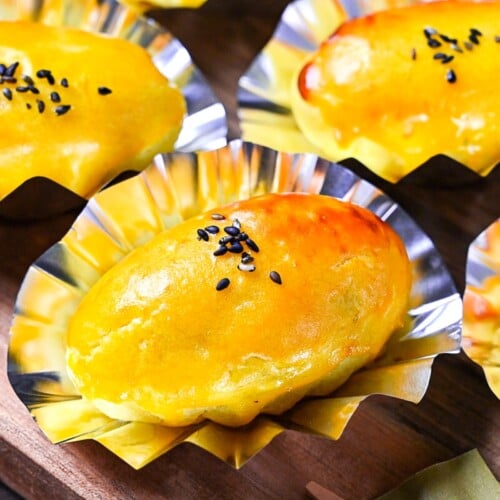
Japanese “Sweet Potato” Dessert
Ingredients
- 350 g Japanese sweet potato (satsumaimo) before peeling see note
- 30 g caster sugar
- 1 ½ tsp honey
- 25 g unsalted butter
- 1 ½ tbsp heavy cream
- ¼ tsp vanilla essence
- ½ tsp mirin
- 1 egg yolk
- ¼ tsp black sesame seeds
Instructions
- Preheat the oven 180 °C (356 °F). Peel the skin of 350 g Japanese sweet potato and cut it into slices approximately 1cm thick. (Cut larger pieces in half.)

- Place the pieces in a bowl of cold water with a pinch of salt and soak for 5 minutes. Drain the water and wash the pieces with cold running water to remove any excess starch.

- Transfer the sweet potato to a microwavable bowl and cover with plastic wrap. Microwave for 5-6 minutes at 600W, mix halfway through to ensure even cooking. (Be careful of the steam when removing the plastic wrap.)

- Allow to cool for a few minutes then mash while it’s still hot/warm.

- Add 30 g caster sugar, 1 ½ tsp honey, 25 g unsalted butter, 1 ½ tbsp heavy cream, ¼ tsp vanilla essence and ½ tsp mirin to the bowl and mix everything together with a spatula.

- Transfer the mixture to a sieve and use the spatula to work it through to make it smooth.

- Divide the mixture into equal 6 pieces and roll them into oval shapes.

- Place them in flattened cupcake cases on a baking sheet, then whisk 1 egg yolk in a small bowl and generously brush the tops and sides until fully coated.

- Sprinkle the tops with ¼ tsp black sesame seeds and bake for 15 minutes or until the tops are lightly browned. (Alternatively, use a toaster oven or grill and cook until browned on top.)

- Cool on a wire rack.

- Enjoy warm or chill in the refrigerator!
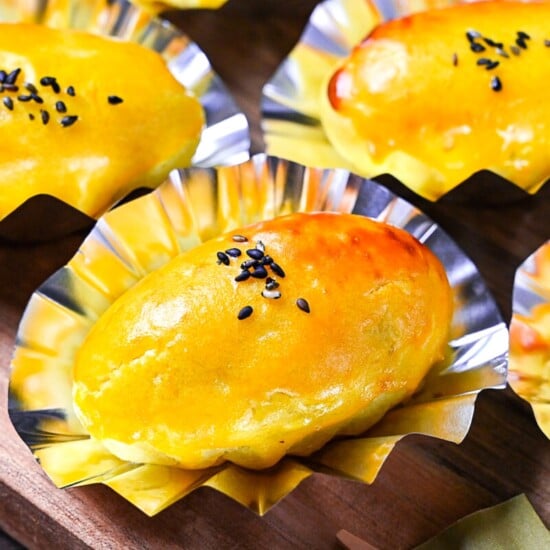


Leave a rating and a comment